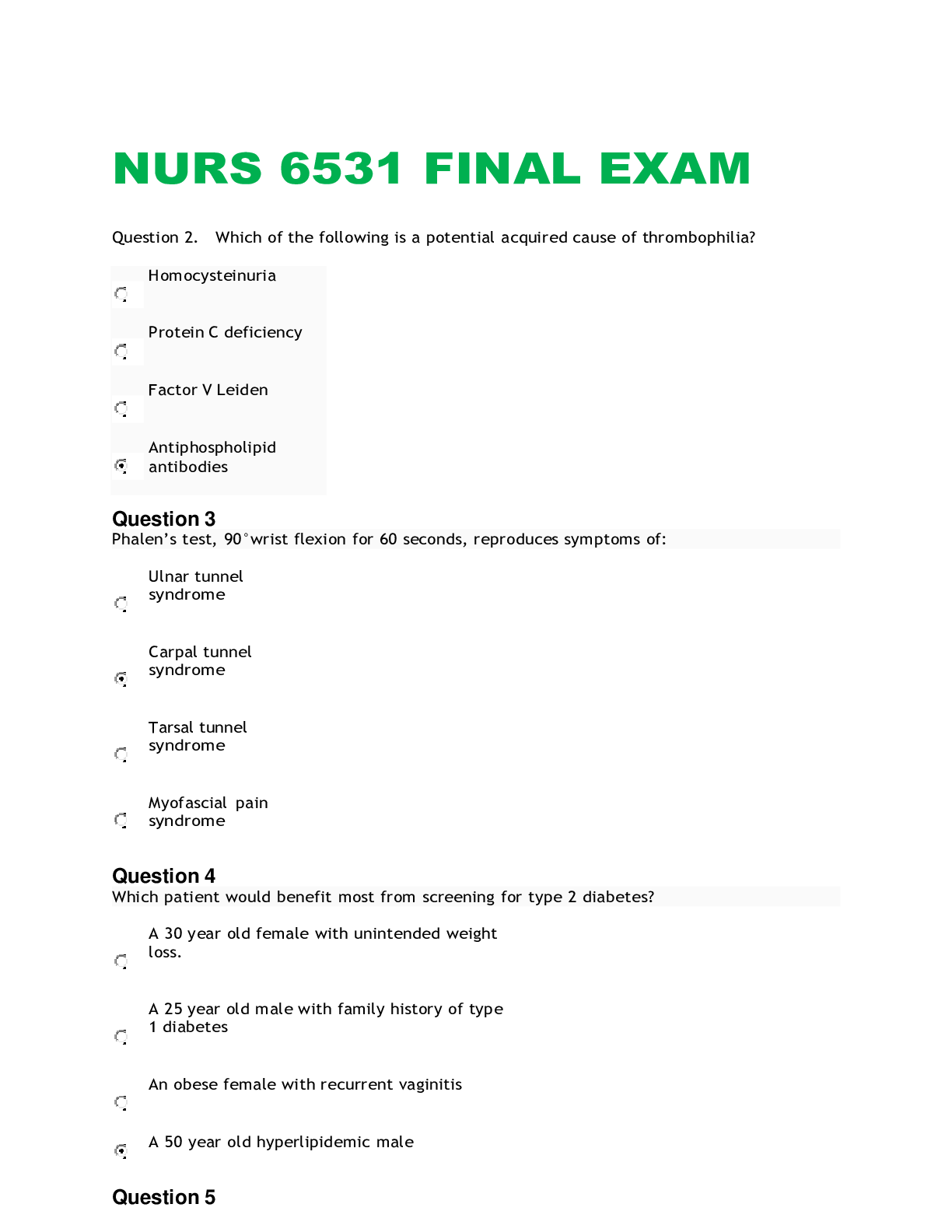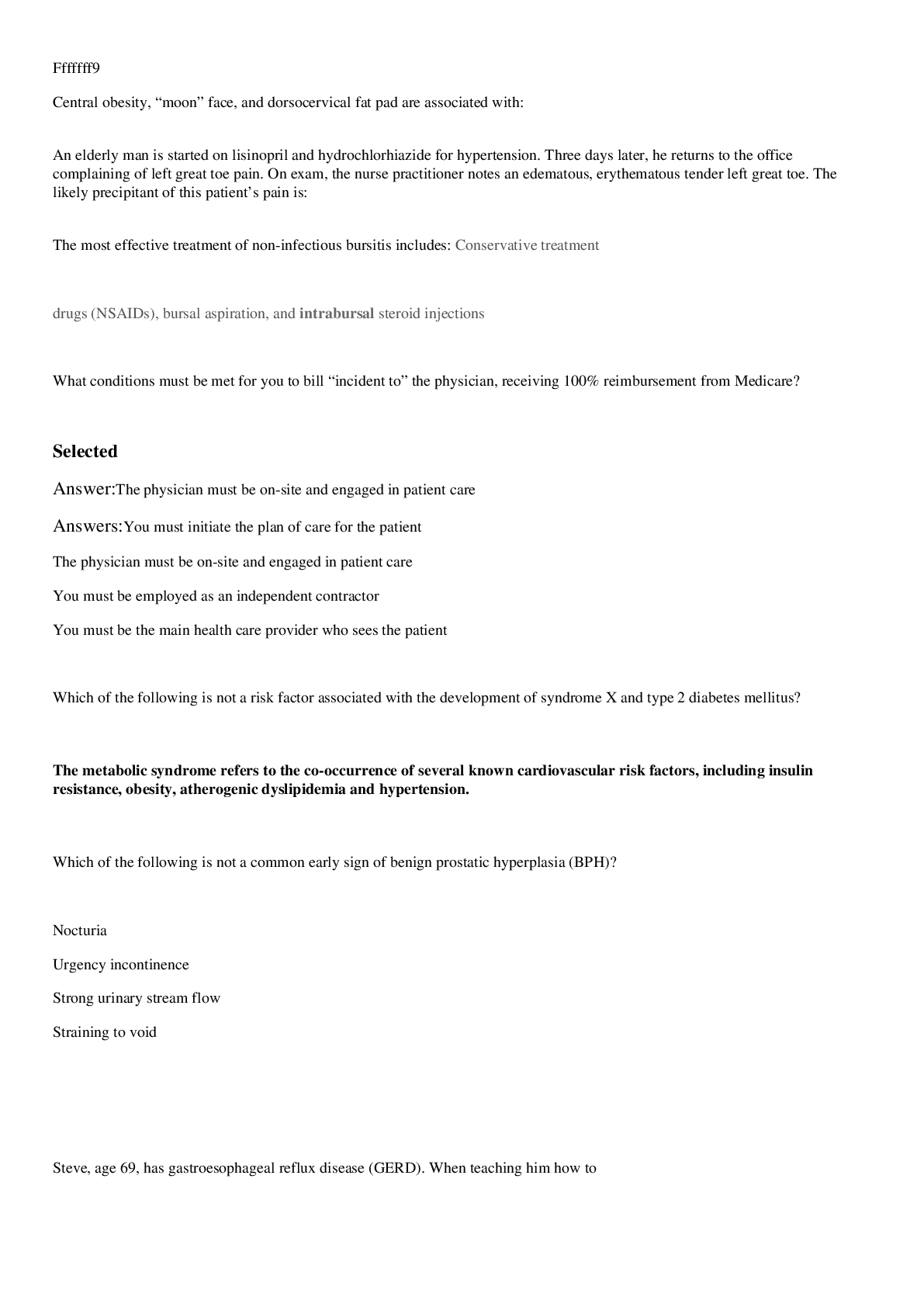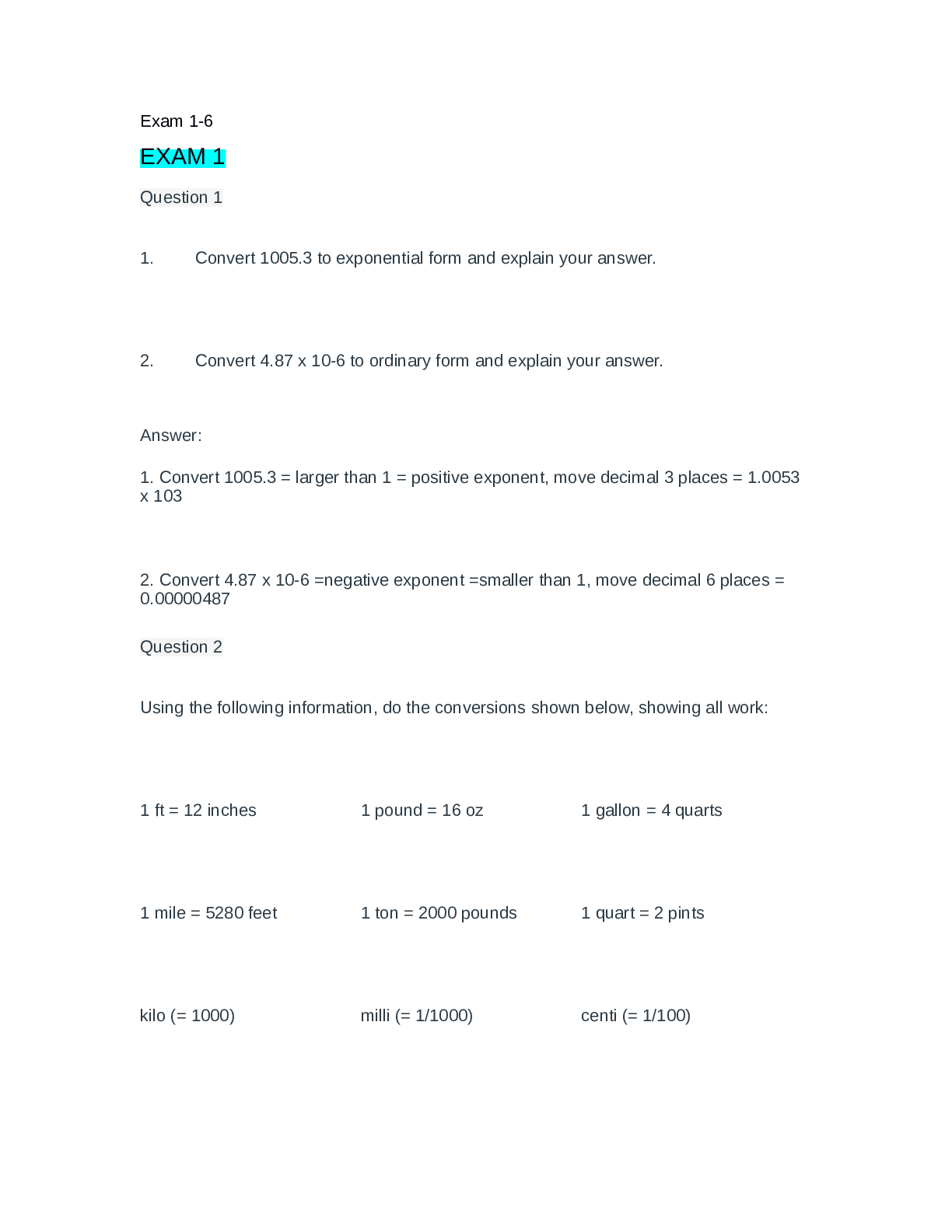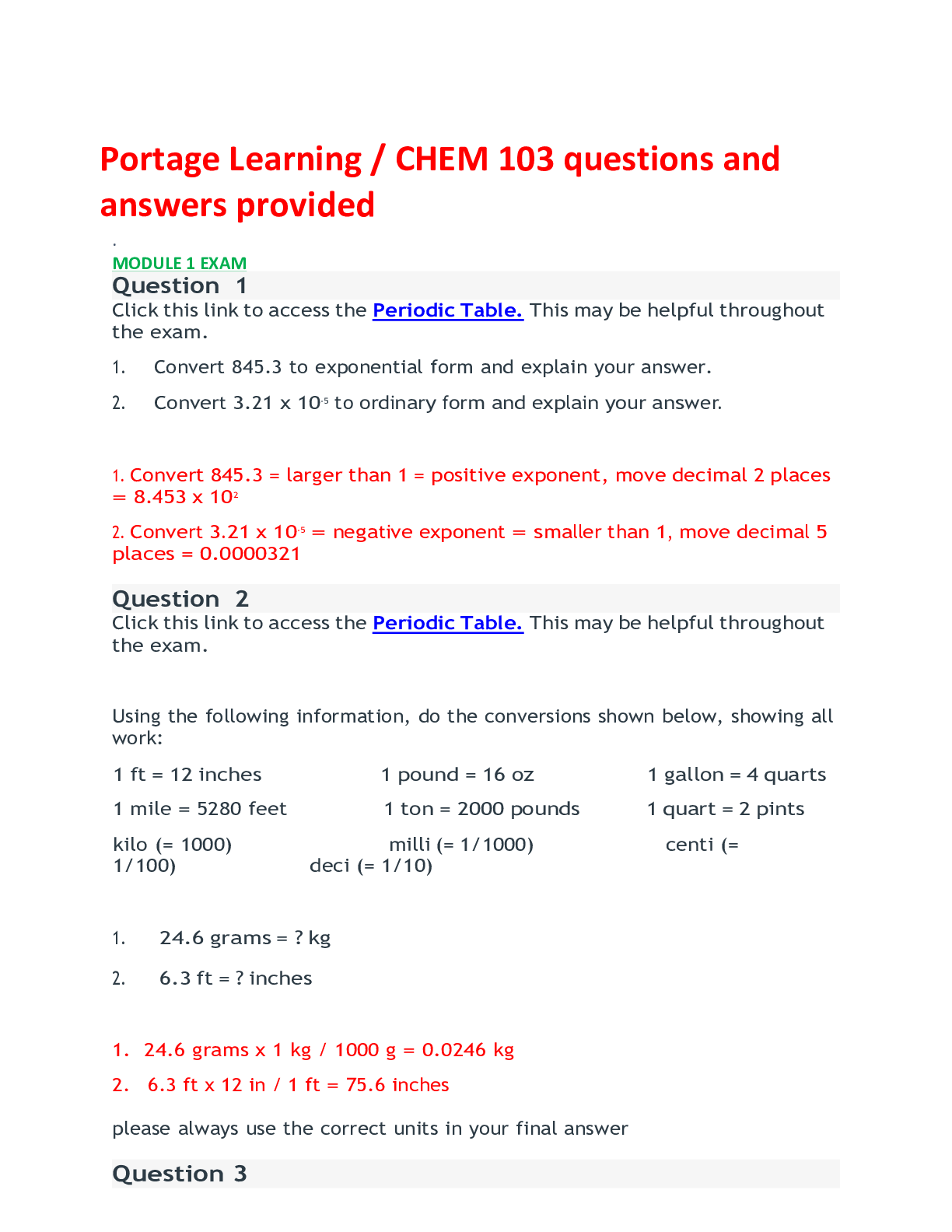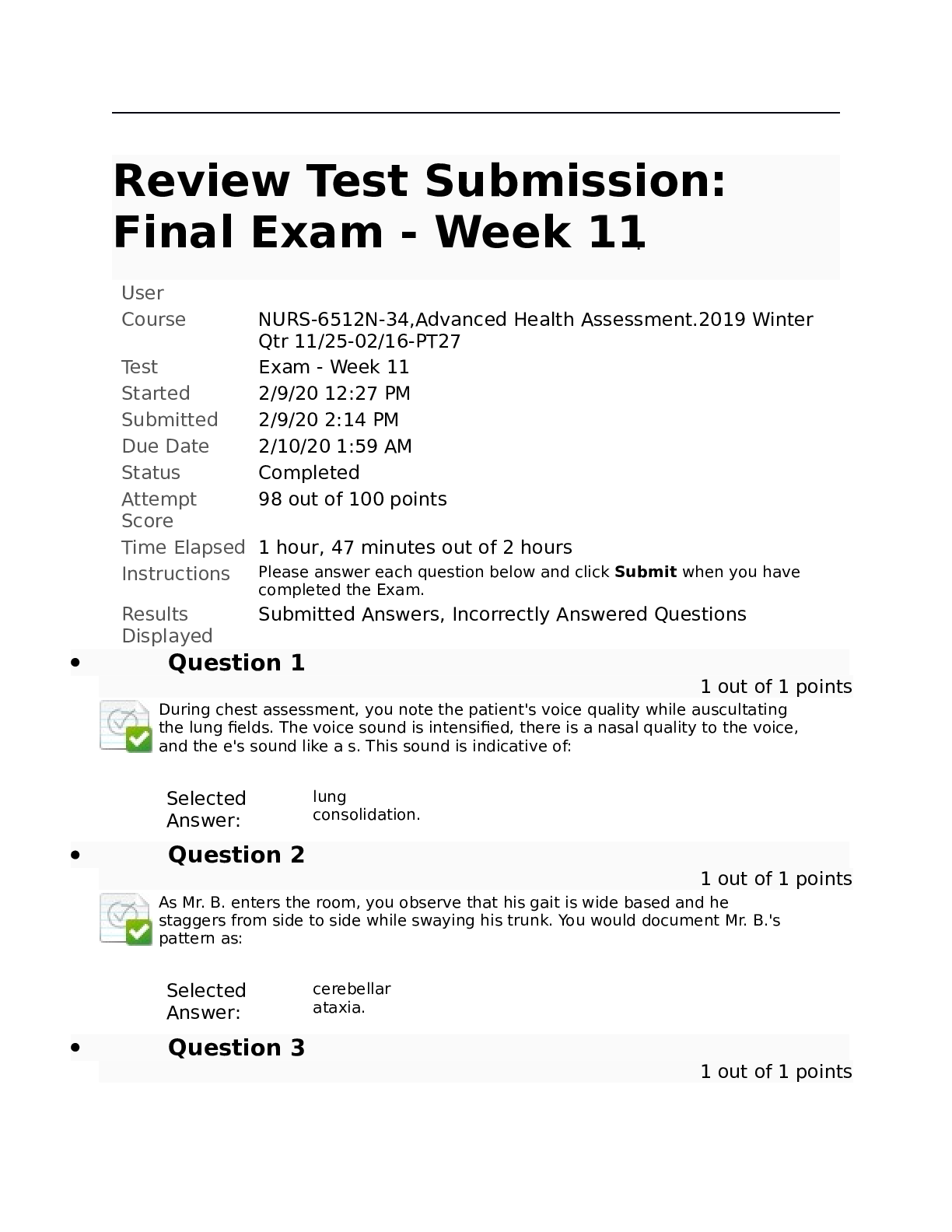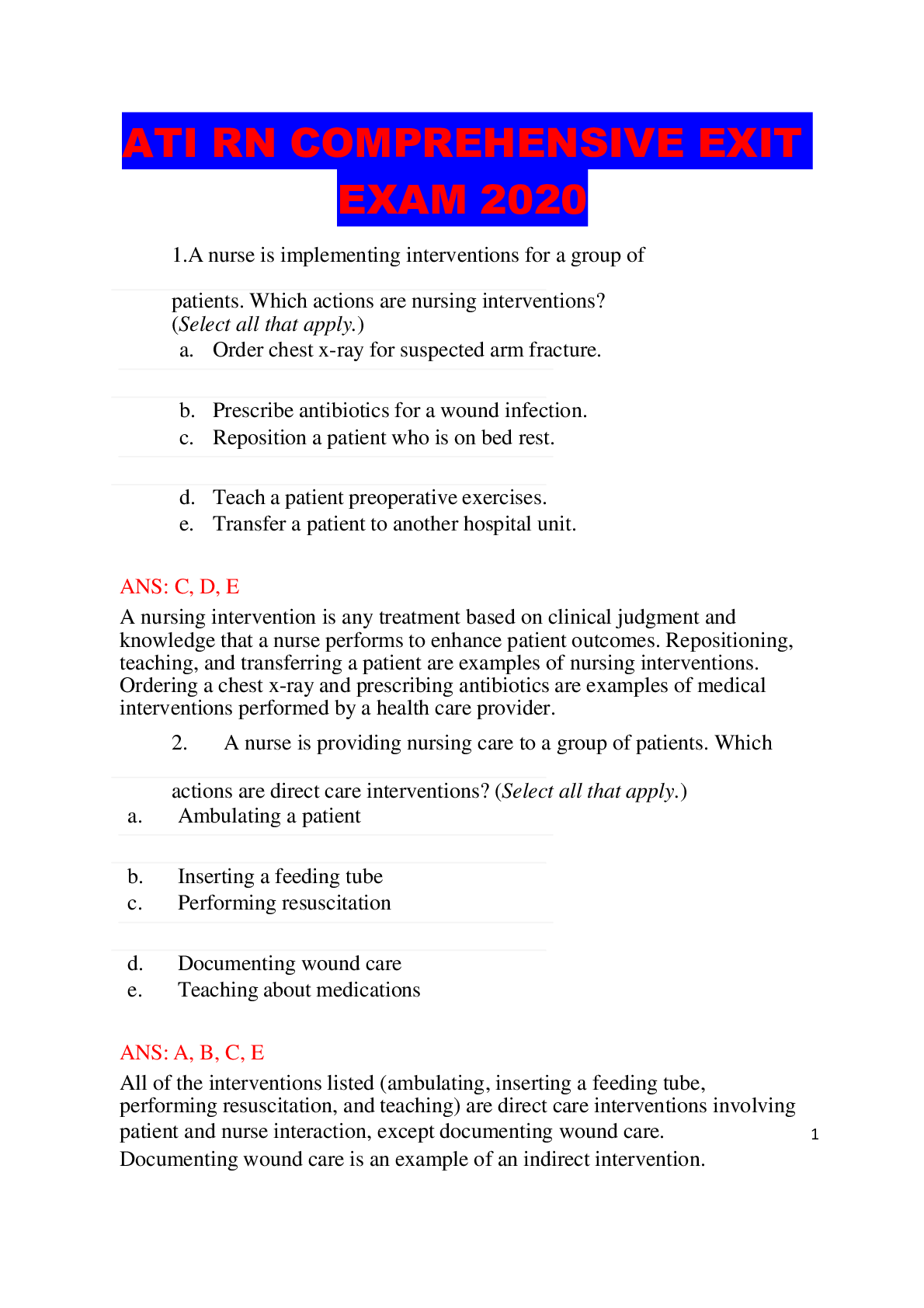Pathophysiology > Final Exam Review > Test Bank Pathophysiology the Biologic Basis for Disease in Adults and Children 8th Edition (All)
Test Bank Pathophysiology the Biologic Basis for Disease in Adults and Children 8th Edition
Document Content and Description Below
Test Bank Pathophysiology the Biologic Basis for Disease in Adults and Children 8th Edition Chapter 1: Cellular Biology MULTIPLE CHOICE 1. Which statement best describes the cellular function... of metabolic absorption? PTS: 1 REF: Page 2 2. Most of a cell’s genetic information, including RNA and DNA, is contained in the: PTS: 1 REF: Page 2 1. Which component of the cell produces hydrogen peroxide (H2O2) by using oxygen to remove hydrogen atoms from specific substrates in an oxidative reaction? PTS: 1 REF: Page 8 1. Which cell component is capable of cellular autodigestion when it is released during cell injury? PTS: 1 REF: Pages 7-8 1. What is the sequence of steps in the development of a digestive enzyme by the pancreas cells from the initial transcription to the release from the cell? 1. The enzyme is transcribed from DNA by RNA in the nucleus, proceeds to the ribosome for synthesis, and is transported in a secretory vesicle to the cell membrane. 1. The enzyme is transcribed from RNA by DNA in the nucleus, proceeds to the lysosome for synthesis, and is transported in an encapsulated membrane to the cell membrane. 1. The enzyme is transcribed by the mitochondria in the nucleus, proceeds to the ribosome for synthesis, and is transported in a cytoskeleton to the cell membrane. 1. The enzyme is transcribed from DNA by RNA in the nucleus, proceeds to the Golgi complex for synthesis, and is transported in a cytosol to the cell membrane. PTS: 1 REF: Page 7 | Figure 1-5 1. During which phase of the cell cycle is DNA synthesized? . PTS: 1 REF: Page 37 1. What organic compound facilitates transportation across cell membranes by acting as receptors, transport channels for electrolytes, and enzymes to drive active pumps? (3) specific enzymes that drive active pumps that promote the concentration of certain ions, particularly potassium (K+), within the cell while keeping concentrations of other ions, for example, sodium (Na+), below the concentrations found in the extracellular environment. The other options do not correctly describe this process. PTS: 1 REF: Page 13 | Page 15 1. Understanding the various steps of proteolytic cascades, such as caspase-mediated apoptosis and complement cascades, may be useful in designing drug therapy for which human diseases? ……………………………………CONTINUED………………………………… [Show More]
Last updated: 1 year ago
Preview 1 out of 32 pages
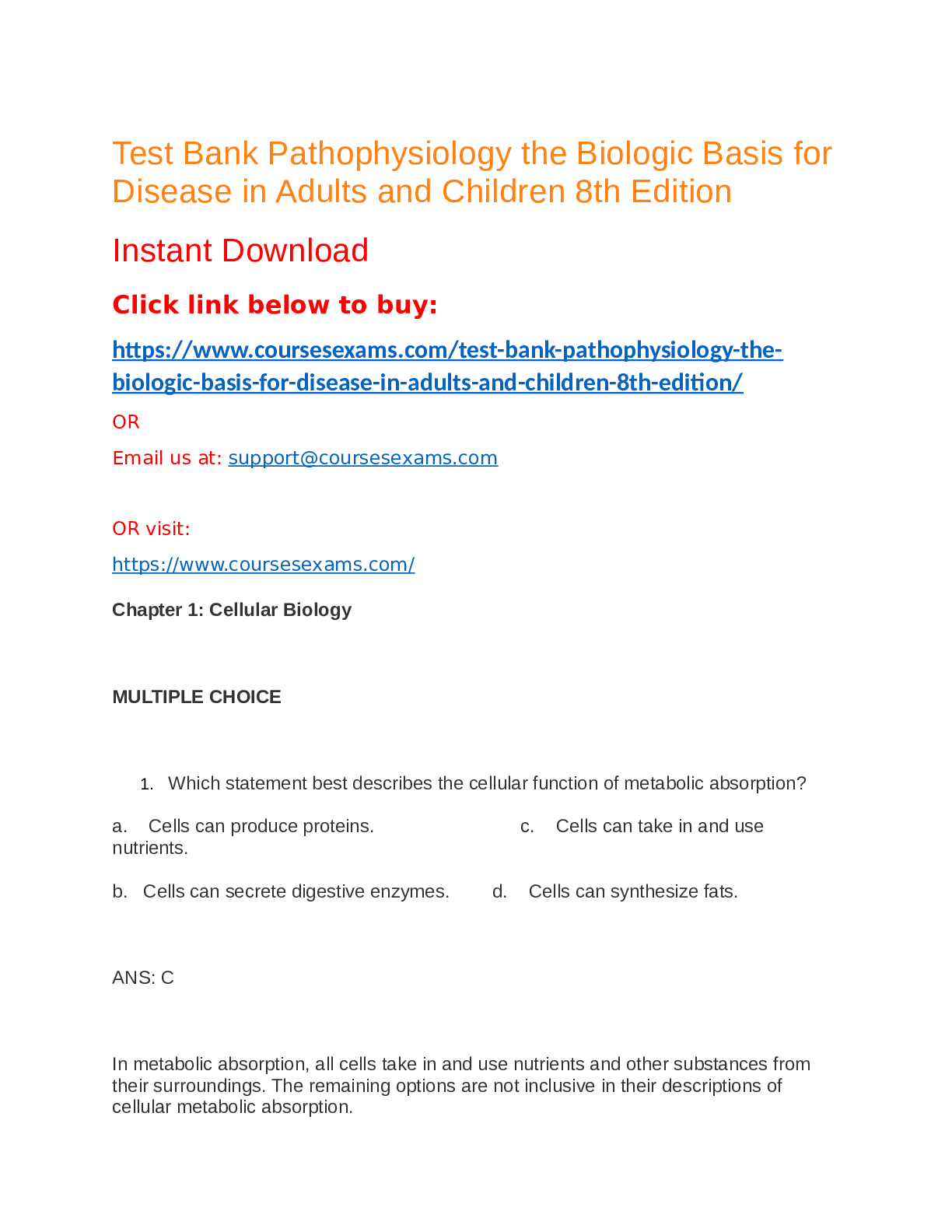
Buy this document to get the full access instantly
Instant Download Access after purchase
Add to cartInstant download
We Accept:

Reviews( 0 )
$17.00
Document information
Connected school, study & course
About the document
Uploaded On
Jan 23, 2021
Number of pages
32
Written in
Additional information
This document has been written for:
Uploaded
Jan 23, 2021
Downloads
0
Views
80

